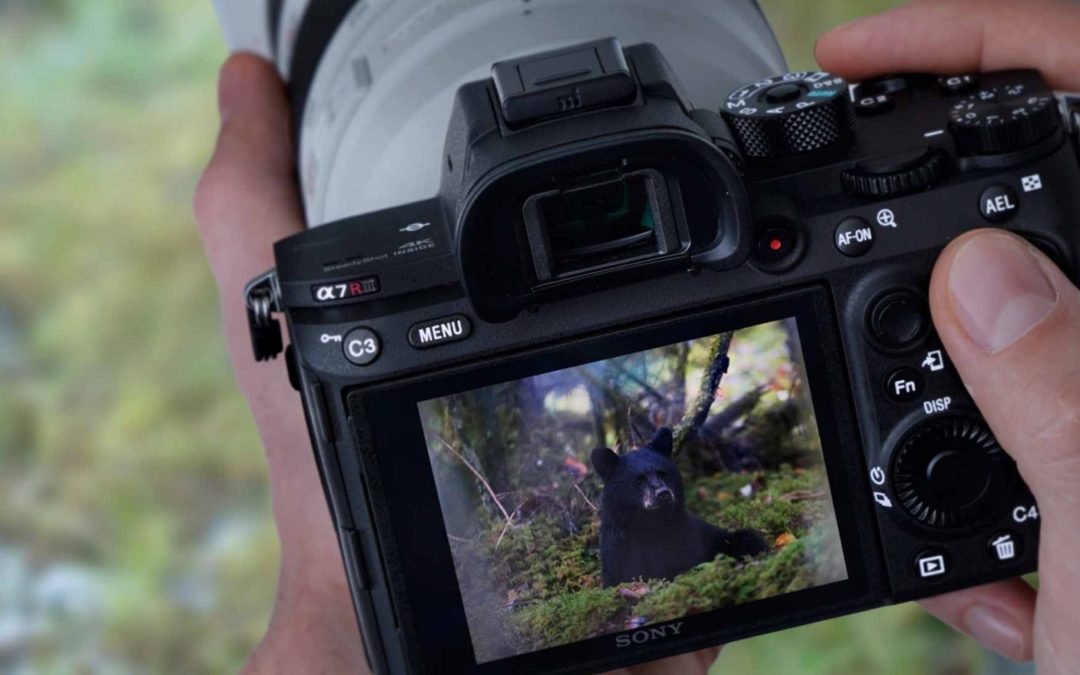Sony unveils the 42.4 MP a7R III mirrorless 4K camera
As rumored, Sony has announced the a7R III, a 35mm full-frame 42.4 MP mirrorless 4K camera with a back-illuminated Exmor R CMOS image sensor. While the sensor is nearly identical to the a7R II, Sony improved 4K UHD shooting with a brand new Hybrid-Gamma Log profile and 15-stops of dynamic range. Sony is also claiming it has reduced noise reduction almost a full stop compared to the a7R II.
4K video
The a7R III offers internal 4K (3840×2160 pixels) in multiple frame rates up to 30 fps. When shooting in Super 35mm, the camera uses full pixel readout without pixel binning to collect 5K(15-megapixel), oversampling to produce its 4K footage. 4K recording has also been improved in the mid to high levels to use the entire full-frame sensor width. The a7R III can also record Full HD up to 120 fps. UHD 4K movies and lower-resolution proxy movies can also be simultaneously recorded.
Both 4K and full HD can record the 100 Mbps XAVC S format using UHS speed class 3 or higher memory cards with 4:2:0 sampling. Additionally, 120 fps recording enables 4x and 5x slow-motion recording with frame rates of 30p or 24p, but no sound will be recorded.
An uncompressed HDMI output allows you to connect an external recorder like a Video Devices PIX-E or Atomos for clean 4K recording with 4:2:2 sampling. While recording 4K video, you can also shoot 8MP stills during playback with a screen grab and save it as a separate file.
It is clear Sony is saving 10bit for the A7S III – And probably 4K 60p as well.
HDR and color
The HLG (Hybrid Log-Gamma) supports HDR workflow, allowing HDR (HLG) compatible TVs to playback true-to-life 4K HDR content without the need to color grade. Also, the S-Log2 Gamma Curve is available, which squeezes up to 1300% more dynamic range in the video signal than Rec. 709 for increased flexibility in color grading. New to the a7R III is S-Log3, which offers up to 14 stops of dynamic range with increased grading control in the shadows and mid-tones.
The a7R III supports Rec. 2020 (aka BT 2020) along with SGamut3/S-Log3 and a new S-Gamut3.Cine/S-Log3 wide color space. S-Gamut3.Cine/S-Log3 is designed for more like pure log workflow with color space similar to negative film scan. Color reproduction is slightly wider than DCI-P3 and the tone curve is more like pure log encoding characteristics, preserving more tonal gradations in the blacks.


Image sensor
The back-illuminated Exmor R CMOS works with an updated BIONZ X image processor. The design utilizes a gapless on-chip lens and AR (anti-reflective) coating to improve light collection for better low-noise performance and a wider dynamic range. The a7R III has a native ISO range of 100-32000, which can be expanded to 50–102400 for still images, and eliminates an optical low pass filter to maximize resolution.
For the shutter bugs, you can continually shoot up to 10 fps in Hi+ mode and up to 8 fps in continuous Hi mode. A new low-vibration shutter reduces vibration and image blur in all modes and Sony has said it has made several advancements in color reproductions of skin tones.
Imaging Edge software suite and Pixel Shift Multi Shooting mode
New with the a7R III is a software suite dubbed Imaging Edge that extends the creative capabilities of the entire shooting process, from pre-processing to post-processing. Imaging Edge provides three PC applications called Remote, Viewer, and Edit, available for free download, which support live-view PC remote shooting and RAW development.
Also new to the a7R III is Pixel Shift Multi Shooting mode. According to Sony, “In this mode, the camera precisely shifts the sensor in 1-pixel increments to capture four separate pixel-shifted images containing a total of approximately 169.6 MP of image data. These four images can be composited together and processed utilizing the new ‘Imaging Edge’ software suite.” The idea behind this mode is to offer images with high levels of color accuracy and resolution in still photography.


Stabilization and design
The a7R III is equipped with a 5-axis optical in-body image stabilization with a 5.5 step shutter speed that compensates for five different types of camera shake during handheld work. Pitch and yaw will only be compensated for in long focal lengths while macro lenses will have horizontal and vertical shift compensation.
A magnesium alloy chassis provides a durable yet lightweight feel. The a7R III now includes dual media slots with one for UHS-II type SD cards for 100 Mbps recording. Sony has also increased the battery life 2.2 times over the a7R II W series battery with the new NP-FZ100 battery.


An upgraded Quad-VGA OLED Tru-Finder has a 3.69m-dot resolution for bright, clear viewing with detailed reproduction. The Tru-Finder also touts the same a ZEISS T Coating found on the a9 to reduce reflections and the fluorine coating on the outer lens help to repel dirt. There are even customizable frame rate options of either 60 fps or 120 fps in NTSC (50fps or 100fps in PAL).
The LCD screen has been upgraded as well, with a resolution of 1.44M dots and WhiteMagic technology to improve viewing in bright, outdoor conditions. Standard or High display quality settings are also available for both the viewfinder and monitor. A multi-selector joystick provides a fast, efficient way to shift focus points, as well as an AF ON button to activate autofocus when shooting movies or stills.
The new a7R III allows for convenient transfer of files to a smartphone, tablet, computer or FTP server via Wi-Fi. A sync terminal enables external flash units and cables to be connected directly for convenient flash sync. Sony also added a SuperSpeed USB (USB 3.1 Gen 1) USB Type-C terminal.
Pricing and availability
The Sony a7R III will ship this November for about $3,200 US and $4,000 CA.
Tech Specs:
- 42.4 MP 35 mm full-frame Exmor R CMOS sensor (35.9 x 24 mm)
- Max Resolution: 7952 x 5304
- Sony E Mount
- ISO 100-32000 range (expandable to 102400)
- Fast Hybrid AF with 399-point focal-plane phase-detection AF
- 425-point contrast-detection AF
- High-speed continuous shooting of up to 10fps
- 5-axis image stabilization with 5.5-stop exposure
- Electronic viewfinder, Quad-VGA OLED
- Memory Card Type: SD, SDHC, SDXC
- NTSC/PAL
- Recording format: XAVC S, AVCHD format Ver. 2.0 compliant
- Video Compression: XAVC S: MPEG-4 AVC/H.264, AVCHD: MPEG-4 AVC/H.264
- Available recording formats:
- 3840 x 2160p at 23.98, 25, 29.97 fps (100 Mbps XAVC S via H.264)
- 3840 x 2160p at 23.98, 25, 29.97 fps (60 Mbps XAVC S via H.264)
- 1920 x 1080p at 100, 120 fps (100 Mbps XAVC S via H.264)
- 1920 x 1080p at 100, 120 fps (60 Mbps XAVC S via H.264)
- 1920 x 1080p at 23.98, 25, 29.97, 50, 59.94 fps (50 Mbps XAVC S via H.264)
- 1920 x 1080p at 50, 59.94 fps (25 Mbps XAVC S via H.264)
- 1920 x 1080p at 25, 29.97 fps (16 Mbps XAVC S via H.264)
- 1920 x 1080i at 50, 59.94 fps (24 Mbps AVCHD via H.264)
- 1920 x 1080i at 50, 59.94 fps (17 Mbps AVCHD via H.264)
- Aspect ration: 16:9
- Up 29 minutes of video clip shooting
- Built-in Mic, optional external
- 1/8″ Headphone, 1/8″ Microphone
- HDMI D (Micro), Micro-USB, USB 3.0, USB Type-C
- 2.2x longer battery life than a7R II











